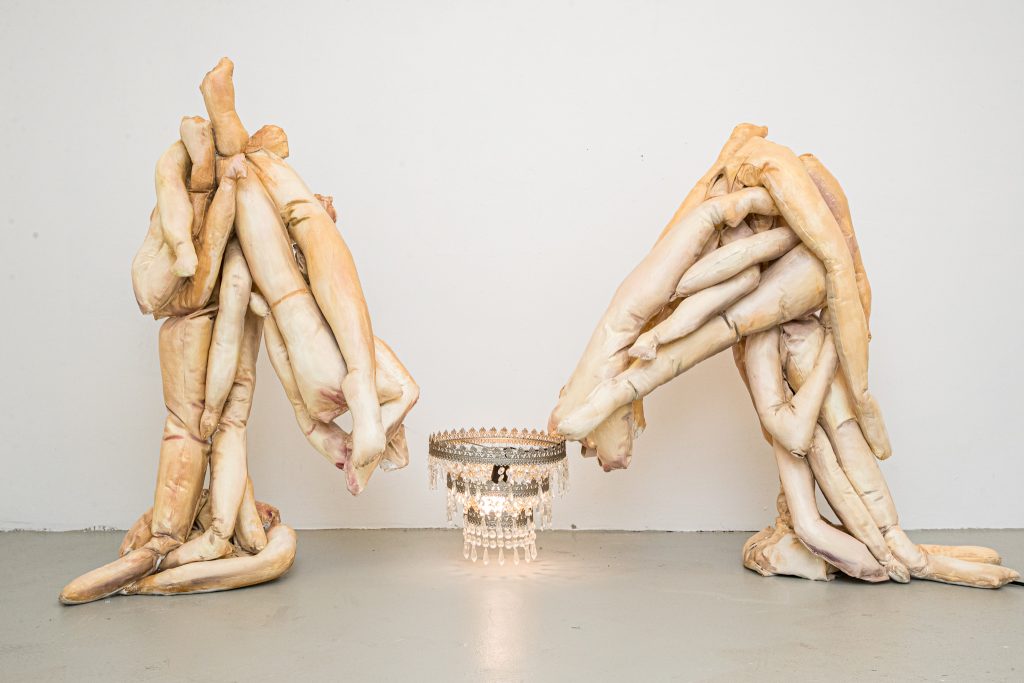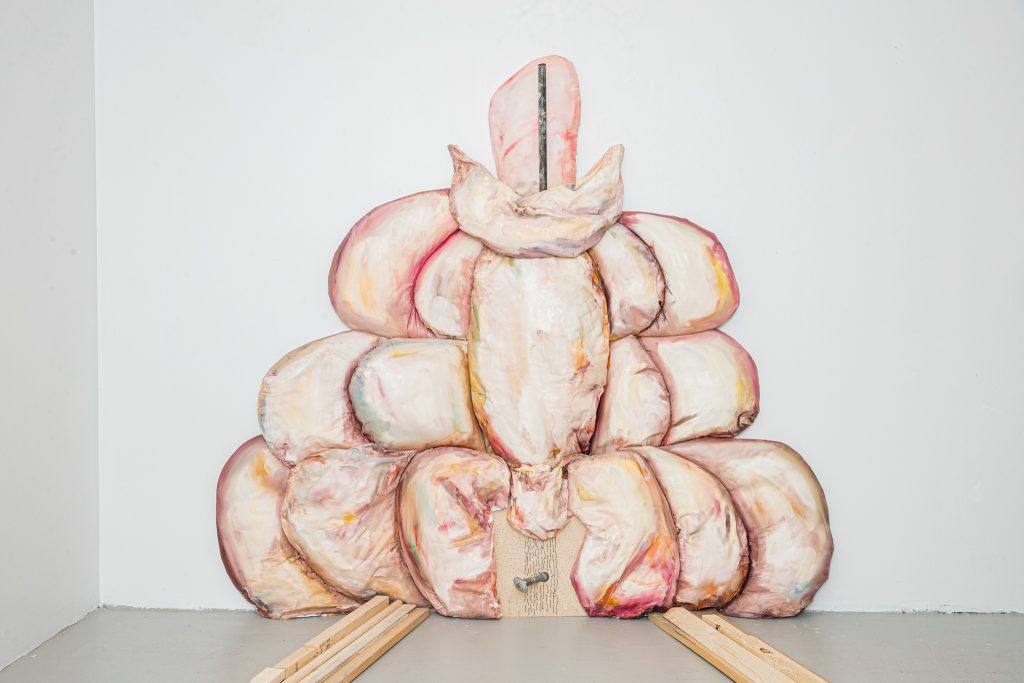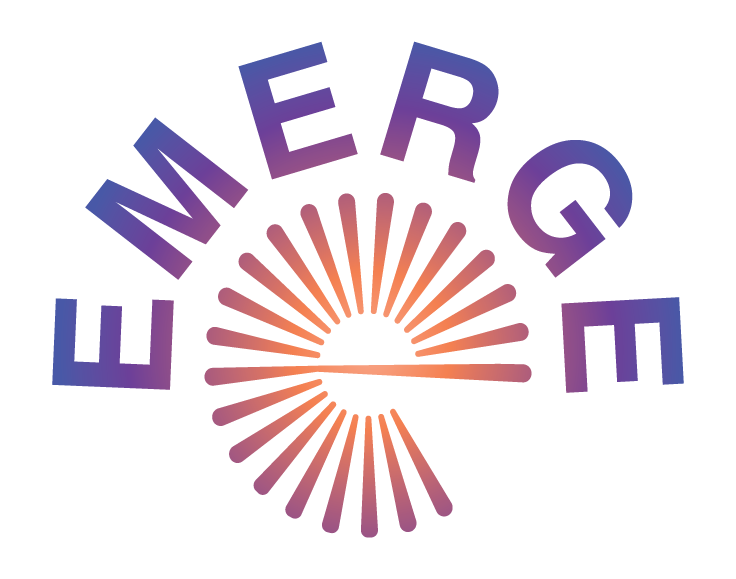
Dar a luz, 2021
Oil on stuffed canvas, chandelier
45″ x 82″ x 20”
I create bodily sculptural paintings. These dimensional works are made by stuffing forms, painting flesh tones, and arranging found objects and building materials. I cut up canvas to reconstruct the painting by sewing, attaching, and rebuilding it into corporeal assemblages. This reconstruction responds to living in an “othered” body, a female body, a Latinx body, one denied agency. I use scale to magnify them from normal signifiers acts of metamorphosis, where they are free to retaliate against the exploitative and abusive violence of our culture.
The use of found objects in my work engages improvisational practices, to engage the subconscious to reconstruct the figure. This process also embraces rasquachismo which is a strategy of making do with what’s readily and cheaply available. Rasquachismo is found in Latinx art and culture. This excessive aesthetic form creates a subversive relationship to power, as a symbol of pride and affirmation.
The body, as transformed by motherhood, features prominently in my work. Becoming a mother in a patrilineal culture, I was engulfed in a state of severe anxiety and vulnerability. I existed in a detached state of mind and body that was until I became a mother. I was confronted with an inescapable bodily encounter through pregnancy, birth and breastfeeding. In my artwork, I am motivated to capture the complexities of these experiences, concerning the tension between fragility and strength, trauma and renewal, and tenderness and violence. My work grapples with the emotional exhaustion and psychological strain of caring for a child in a patriarchal society. Bodily forms are distorted, destroyed and rebuilt to dismantle the normalization of oppression and counter hegemony. The sociopolitical implications surrounding the female body and maternal identity of our current society has become the subject of my work and understanding how our visual culture perpetuates these stereotypes has informed how and why I make the work that I do.
In my piece, Plopped, the figure that has succumbed to psychological and physical exhaustion. The contrast of soft and hard creates a tension in the figure, along with other misplaced forms to create a powerful humor that subverts the limited stereotypic ways of representing the female, a dichotomy of sexualized objects or saintly madonnas. In my imagination the bodies are freed to signify play, joy and power, simultaneously telling their story. As the artist Sonia Boyce said, “When you start to discuss the issues that affect a community, transposing positives for negatives is insufficient in dealing with the complexities of human experiences.” In my work, Dar a luz, the biomorphic assemblages recreate an action of squatting legs of birth that is giving light to the world, containing humor and beauty that is inevitably denied when the body is demoralized.
— Lauren Flaaen

Plopped, 2021
Oil on stuffed muslin, wood, wire, pipe
66″ x 46″ x 60”
Lauren Flaaen is currently studying Painting and Drawing at the School of the Art Institute of Chicago in the Post-Baccalaureate program. She holds a BA from the University of Washington. She has worked as an art educator at Gilda’s Club of Chicago, Chicago Opera Theater, CB Village, and Friends of Youth. She is a Chicago based artist who has exhibited at Roman Susan Gallery, Art-in-Place with Terrain Exhibit and CNL Projects, CAPX at SAIC and SAIC Galleries. She has exhibited through online exhibits at Stay At Home Gallery and Painting At Night with Artist/Mother Podcast in Paris, TN, Woman Made Art Gallery, Chicago, IL and Maternochronics.
